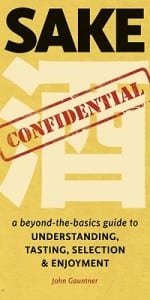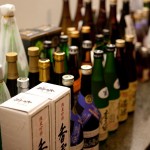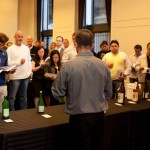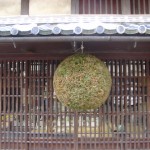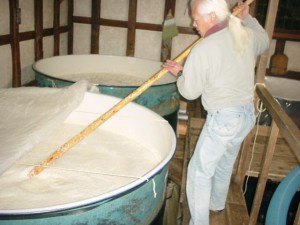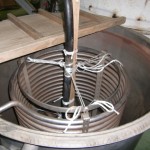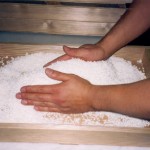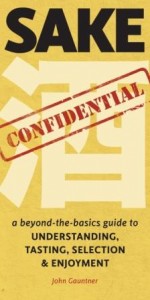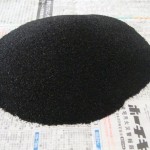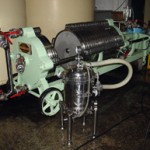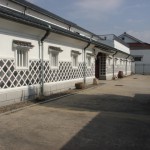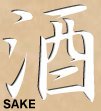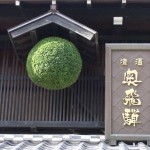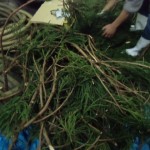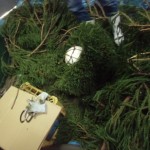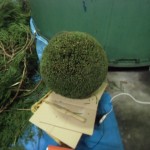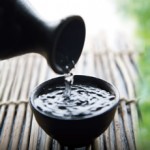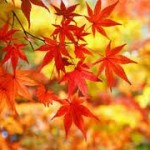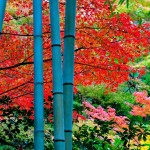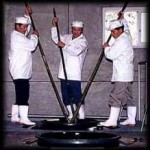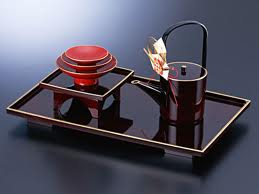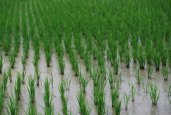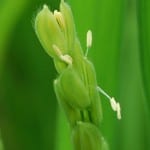Aged sake, or “koshu,” is a topic I am wary of breaching. There are a number of reasons for this reticence, not least of which is that aged sake represents such a miniscule portion of all sake that is out there. Aged sake is hard to get, quite expensive, and overall a totally different animal than regular sake – and certainly NOT better in any unequivocal sense. Nor is there any one proper way to age sake, nor any one universally agreed upon way that aged sake should turn out. In one sense, it amounts to – more than anything else – a diversion in the sake world. Fresh sake is really what warrants most of out attention.
However, before I come off as too harsh or biased, let me add that most of the time I like aged sake: it has its place indeed. And heaven knows we all need our diversions from time to time.
First, a bit of historical background.
Long ago, even as far back as the 13h century, sake was often aged. There were those in the aristocracy that were very fond of such sake, and typical aging periods were three or five years. Yet the truth is that most people back then just wanted a buzz, and so even though aged sake was considered precious and was more expensive, most folks were drinking freshly brewed sake.
However, to finance wars with China and Russia, the government leveled its gaze at the potentially rich source of tax income from sake. When these Meiji-era (late 1800s) tax laws were in place, sake tax comprised more than 30% of all taxes collected.
Furthermore, in order to ensure they got their money as soon as possible, this tax was due the moment the sake was pressed, i.e. when the brewing process was completed . The tax was due, then, before they even sold the sake. Naturally, this kind of eliminated any motivation to lay sake down. No kura wanted to wait three to five years to get their money back, and also risk the sake going south (although rare today, it was not uncommon at all back then, especially with aged sake), and their revenues with it! This served the taxman quite nicely, as a faster flow of sake meant more tax revenues.
This law finally changed about 50 years ago, and brewers are now taxed when the sake ships from the kura (i.e. is sold). This opened the door for renewed aging experimentation. Today, the word koshu means aged sake, but it can also refer to sake that has inadvertently aged for one reason or another, especially in a less than positive light, when compared with newer sake, or “shinshu.” But sake deliberately matured for long periods is known as “choki jukusei-shu.” (The word koshu will always do in a pinch!)
So aging sake is not a new concept. However – and this is important – only a very, very minuscule amount of sake is aged. The amount of sake laid down each year to age for a significant time (more than three years) is about one percent of one percent of one percent; that’s it. Why is this? There are two reasons, in my opinion. One, aged sake is a totally different animal from what we know as premium sake today, and two, aged sake is all over the map in its final form.
Looking at the first reason in more depth, consider the nature of today’s premium ginjo sake: light, aromatic, fruity, and lively are a few words that describe fine sake as we know it today. Aged sake – in its most drastically altered forms – can be dark brown in color, heavy, cloying, musty, and rich. It is completely different from what we know and love as fresh sake. It is, in short, a totally different beverage. Granted, aged sake can be just as complex and deep as fresh ginjo, but otherwise unrecognizable as sake. Sure, it can be enjoyable, but it’s not sake as we have come to know it.
A quick caveat to cover my butt: some sake is aged at lower temperatures and at conditions that do not alter the color or flavor in these above-mentioned ways, but rather in ways that present a more well-rounded sake with greater integration of the various flavors and aromas. This kind of aged sake is very sake-like indeed.
This caveat leads to the second point: methods of aging sake, and the results those methods leads to, are all over the map. There is no one way sake is aged, and there is no one way aged sake should end up. Some brewers will age sake in large tanks at room temperature. Others will use tanks at refrigerated temperatures, others in bottles at various temperatures including freezing temperatures. And, yet others will use hybrid methods, aging in tanks for a few years, draining off to leave sediments behind, transferring to bottles, and aging longer at colder temperatures. There is no “one way.”
Each one of these methods will lead to vastly different results. In general, higher aging temperatures and larger vessels (i.e. tanks vs. bottles) yield more drastic changes in color and heaviness of flavor. Colder temperatures and smaller vessels produce less noticeable, more subtle variations. But it is all referred to as aged sake.
Further complicating all of this is the grade of the sake that was laid down to begin with. Usually, the lower the grade of sake, the less well it stands up to the tests of time. At the risk of oversimplifying, higher grades – like ginjo-shu – aged more gracefully.
For example, on one end of the spectrum is Chiyo no Kame of Ehime, who has one daiginjo product aged ten years at freezing temperatures. It is very hard to tell any difference at all between that and recently brewed sake, other than the flavor is quite well-rounded. On the other end of that spectrum is Daruma Masamune of Gifu, who will age some of their sake for 20 years at room temperature. This stuff is dark like soy sauce, and wildly strong in flavor – although enjoyable to many for what it is.
And, hovering somewhere in the complex middle is Azuma Rikishi of Tochigi, who has the most organized aging program that I know of. They age for three years in a tank, then bottle, aging for five to ten years longer at 6C. (Indeed, this sake is precious.)
And what about aging yourself, either deliberately or inadvertently? Feel free to try it, and know that sake will begin to change noticeably in about a year (depending on storage conditions). You may even like what happens to it over time. But my mantra on aging sake at home reads thus: if you want to taste a sake – THE WAY THE BREWER WANTED YOU TO ENJOY IT – then drink it young, like within a year, and keep it cool until then.
And again, all of this complexity and variation applies to but a drop in the bucket of all sake produced. Hence my reserve at promoting it too much. I think it is much more important for people to know a junmai-shu from a ginjo-shu from a run of the mill table sake, or to know a typical Niigata style from a typical Shizuoka profile. I think it is more important for the world at large to come to know what truly good sake is, how to enjoy it, what to look for, and what to serve on the table with it. Most importantly, we all need to taste enough to know what we personally like in a sake (which is all that really matters).
When this understanding reaches a critical mass, we can all venture into more tangential styles. Otherwise, we have a tendency to immediately head toward the different styles, the diversions, the rare stuff – which in the case of koshu is a very small world, and not necessarily better.
So, at the end of the day, if you remember one line from this tirade, even if it is a slightly limiting generalization, let it be this: By and large, sake does not improve with age. Drink it young.
But, in the end, everything written here is a generalization, and is just my opinion. It’s all about enjoyment. As I mentioned, I myself do enjoy some koshu from time to time. And to not talk about aged sake is to do readers a great disservice.
BY: The Brewing Year Dating System
As explained above, sometimes sake is aged by the kura before being released. And, very often, they will tell you right there on the label that it is “3-year koshu” or “5-year koshu,” with the term “jukusei” (aged, or matured) sometimes used instead. Of course, this information is only useful if you know that this sake was only recently released from the kura – if it has been sitting on someone’s shelf for a while, that time must be factored in.
But sometimes, we simply see an indication of the year in which it was brewed. This should make it all simpler – provided we know how to read that information. The problem stems from two points: one, Japan does not use the same dating system as the West, but rather a year-numbering system based on the reign of the current emperor, and two, a given sake brewing season stretches across two calendar years. Butツ this article will clear it all up for you!
First of all, while Japan does relate to the fact that this is 2003, officially and traditionally it is called Heisei 15, or the 15th year of the era of Heisei. So just remember that and you are half way golden. If a bottle is labeled as being brewed in year 10, that is five years ago, so 1998. A bit of a mathematical hassle, especially when drinking, but not an insurmountable obstacle.
Next, sake brewing starts in the fall of one year and ends in the spring. So, if a sake were labeled only as year 15, we would not know if it was the season of Fall 14 to Spring 15, or Fall 15 to Spring 16. These are two different years as far as brewing is concerned, and can be likened to two totally different vintages in the wine world. So, we need a bit more detail.
This point did not escape the clever folks at the ministry of taxation, who also needed a more efficient way to tax kura on their output. And so long ago they came up with the concept of the “Brewing Year,” or BY. Just like fiscal years can differ from calendar years, in Japan the Brewing Year runs from July 1 to June 30th of the following year. This, then, encompasses the entire brewing season in one 12-month period.
So, BY14 (it might also appear 14BY) ran from July 1 2002 until June 30 2003. And sake brewed last fall and into this spring would be considered part of BY14.
How does this help you? Well, when you see an aged sake labeled, for example, BY10, you know that since Heisei 10 was 1998, this sake was brewed in the season beginning in the fall of 1998, and running into the spring of 1999. So it is about five years old. BY6, as one final example, would be four years older, having been brewed between fall of 1994 and spring of 1995.
Again, since aged sake is such a small drop in the bucket, you will rarely come across this. But if and when you see this arcane nomenclature, you will know precisely how old your sake is.
 In the movie (and play), “A Bronx Tale,” the members of a particular fraternal organization centered around their ethnicity ran a bar into which a group of members of another fraternal organization, this one centered on their preference for two-wheeled vehicles, attempted to enter.
In the movie (and play), “A Bronx Tale,” the members of a particular fraternal organization centered around their ethnicity ran a bar into which a group of members of another fraternal organization, this one centered on their preference for two-wheeled vehicles, attempted to enter. shaking and shooting their beer and creating every kind of ruckus imaginable. At which point the head wise guy shuts the door ominously, looks around the room, and says, “Now youse can’t leave.”
shaking and shooting their beer and creating every kind of ruckus imaginable. At which point the head wise guy shuts the door ominously, looks around the room, and says, “Now youse can’t leave.”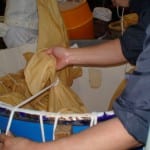 Of course, all this naturally leads to questions relating to how young is still young enough, or conversely stated, how old is too old? In actuality, there is no simple answer, which is why following the “younger is better, don’t mess around with aging sake at home” philosophy is best at first. But the ultimate truth is a bit higher than that.
Of course, all this naturally leads to questions relating to how young is still young enough, or conversely stated, how old is too old? In actuality, there is no simple answer, which is why following the “younger is better, don’t mess around with aging sake at home” philosophy is best at first. But the ultimate truth is a bit higher than that.